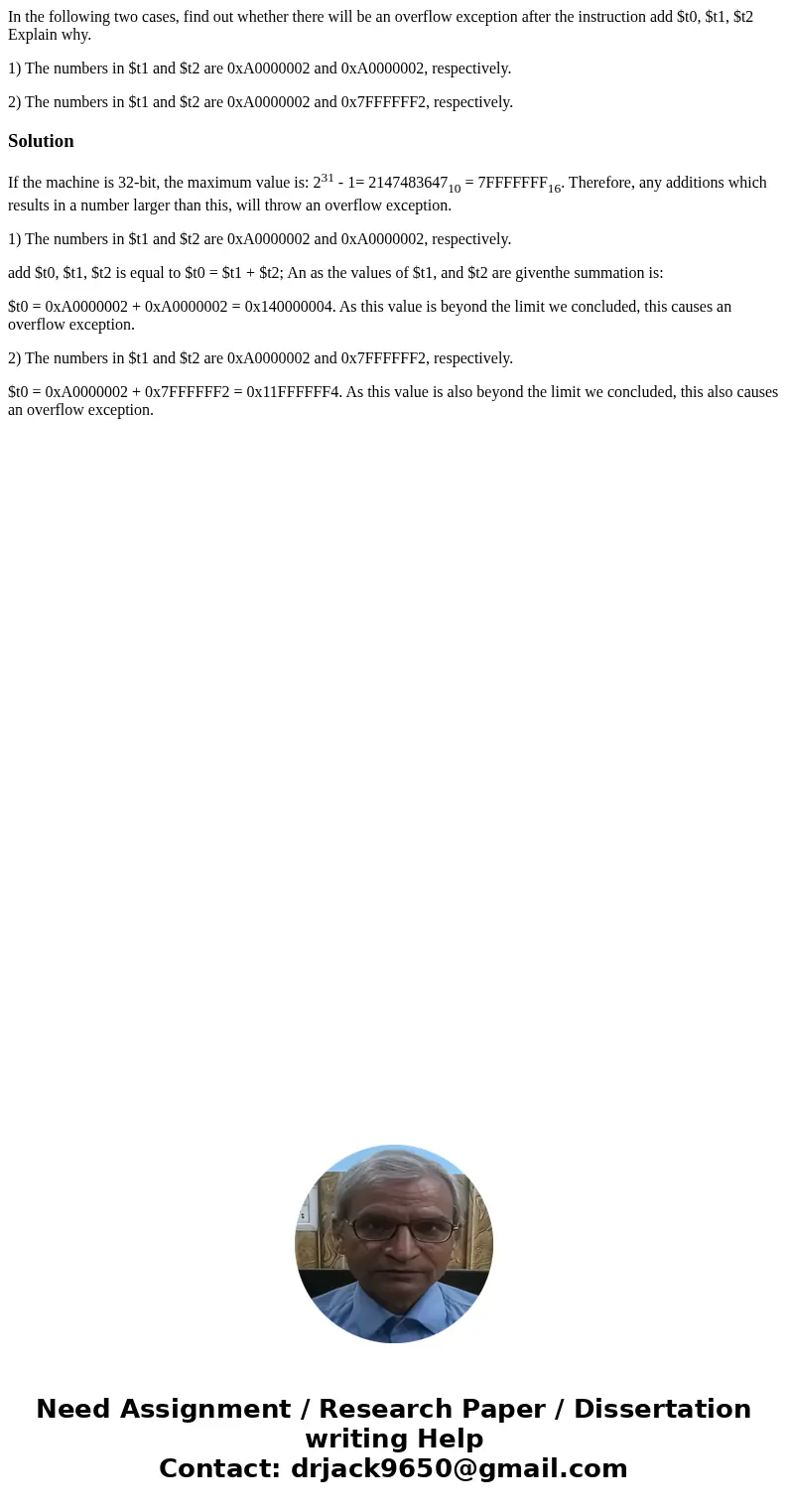In the following two cases find out whether there will be an
In the following two cases, find out whether there will be an overflow exception after the instruction add $t0, $t1, $t2 Explain why.
1) The numbers in $t1 and $t2 are 0xA0000002 and 0xA0000002, respectively.
2) The numbers in $t1 and $t2 are 0xA0000002 and 0x7FFFFFF2, respectively.
Solution
If the machine is 32-bit, the maximum value is: 231 - 1= 214748364710 = 7FFFFFFF16. Therefore, any additions which results in a number larger than this, will throw an overflow exception.
1) The numbers in $t1 and $t2 are 0xA0000002 and 0xA0000002, respectively.
add $t0, $t1, $t2 is equal to $t0 = $t1 + $t2; An as the values of $t1, and $t2 are giventhe summation is:
$t0 = 0xA0000002 + 0xA0000002 = 0x140000004. As this value is beyond the limit we concluded, this causes an overflow exception.
2) The numbers in $t1 and $t2 are 0xA0000002 and 0x7FFFFFF2, respectively.
$t0 = 0xA0000002 + 0x7FFFFFF2 = 0x11FFFFFF4. As this value is also beyond the limit we concluded, this also causes an overflow exception.

 Homework Sourse
Homework Sourse